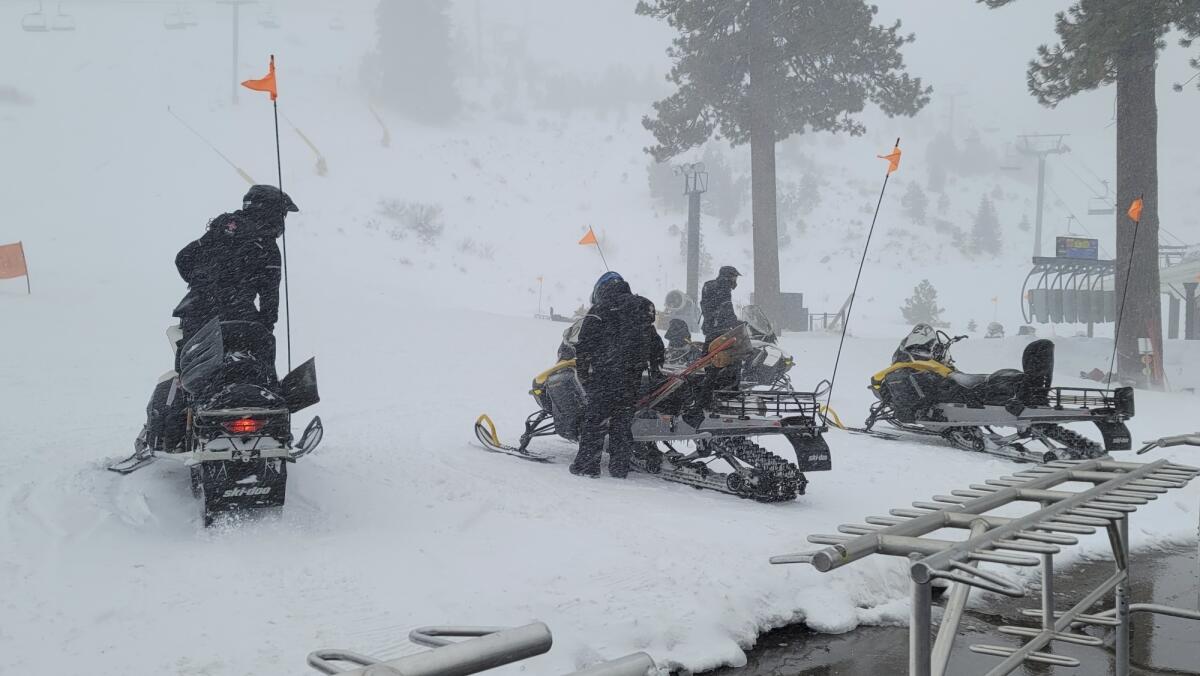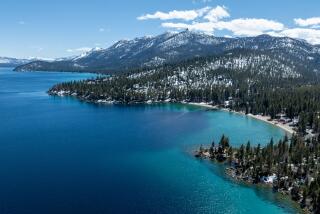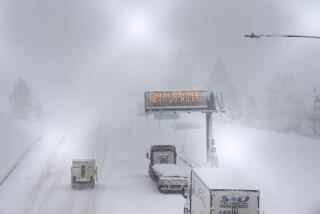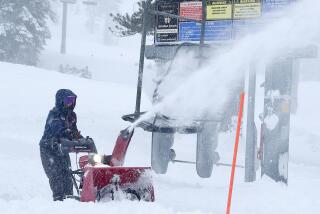Officials warned of ‘considerable’ avalanche danger before deadly slide at Palisades Tahoe

- Share via
Hours before an avalanche killed a 66-year-old skier and injured at least one other at Palisades Tahoe resort on Wednesday, forecasters warned that the risk of an avalanche in the area was “considerable.”
The Sierra Avalanche Center, a nonprofit avalanche forecasting organization conducted in partnership with the U.S. Forest Service, issues a daily forecast with a five-point avalanche danger scale, ranging from low (1) to extreme (5).
The center monitors the conditions of the Sierra Nevada region of California to warn the public about the chances of upcoming avalanches. During peak avalanche season, the center employs three full-time avalanche forecasters to monitor weather, snowpack and other conditions to issue the daily forecast. The forecast applies to backcountry conditions — ski areas practice avalanche mitigation strategies — but help illuminate conditions and dangers of avalanche in the area.
Wednesday’s forecast ranked considerable (3) on the scale for a portion of the central Sierra Nevada, encompassing all of Lake Tahoe and much of the surrounding mountains. A Level 3 threat indicates “dangerous avalanche conditions” that could lead to “small avalanches in many areas; large avalanches in specific areas,” and warns that “natural avalanches [are] possible; human-triggered avalanches likely.”
The center’s forecast discussion said “weak snow” layers that were one to two feet below the surface were “the most problematic layers” in the area snowpack before Wednesday’s storm hit the region.
The storm brought 2 to 6 inches of snowfall Wednesday, with 4 to 8 inches falling at elevations above 7,000 feet, according to the National Weather Service. A winter storm warning was in place all day Wednesday due to ridge gusts measuring up to 105 mph.
The day’s avalanche forecast warned of two types of avalanches possible for the Greater Tahoe area: “persistent slab” avalanches, and “wind slab” avalanches. The former is caused by “weak snow” layers below the surface, which can be reactive to new layers being added — such as during a snowstorm — while the latter occurs when winds move snow into slabs that collapse into avalanches, especially along alpine tree lines.
After a door plug on a 737 Max 9 blew open mid-flight, CEO Dave Calhoun told Boeing employees there would be ‘100% transparency’ around ‘our mistake.’
“We want good cohesion of layers in the snowpack, not what we call weak layers,” said Andrew Schwartz, the lead scientist and manager of the UC Berkeley Central Sierra Snow Lab.
During cold storms, such as the one that hit the Sierra Nevada on Wednesday, “that is light and fluffy snow that doesn’t stick to itself,” Schwartz said.
The central Sierra Nevada had been facing a record low snowpack for this time of year due to the ongoing “snow drought.”
Wednesday was the first day of operation for ski lift KT-22 at the Palisades Tahoe Resort where the deadly avalanche occurred. Michael Gross, Palisades’ vice president of mountain operations, said it was “absolutely” typical to open the lift that morning, even with a snowstorm arriving.
“We’ll evaluate the conditions,” Gross added, “and, based on our expertise and experience and the history, if we deem the conditions safe, we’ll open the terrain.”
The resort will reportedly be open Thursday except for the area where the avalanche occurred, as the fatality is under investigation.
A representative from the Sierra Avalanche Center could not be reached for comment late Wednesday.
More to Read
Sign up for Essential California
The most important California stories and recommendations in your inbox every morning.
You may occasionally receive promotional content from the Los Angeles Times.












